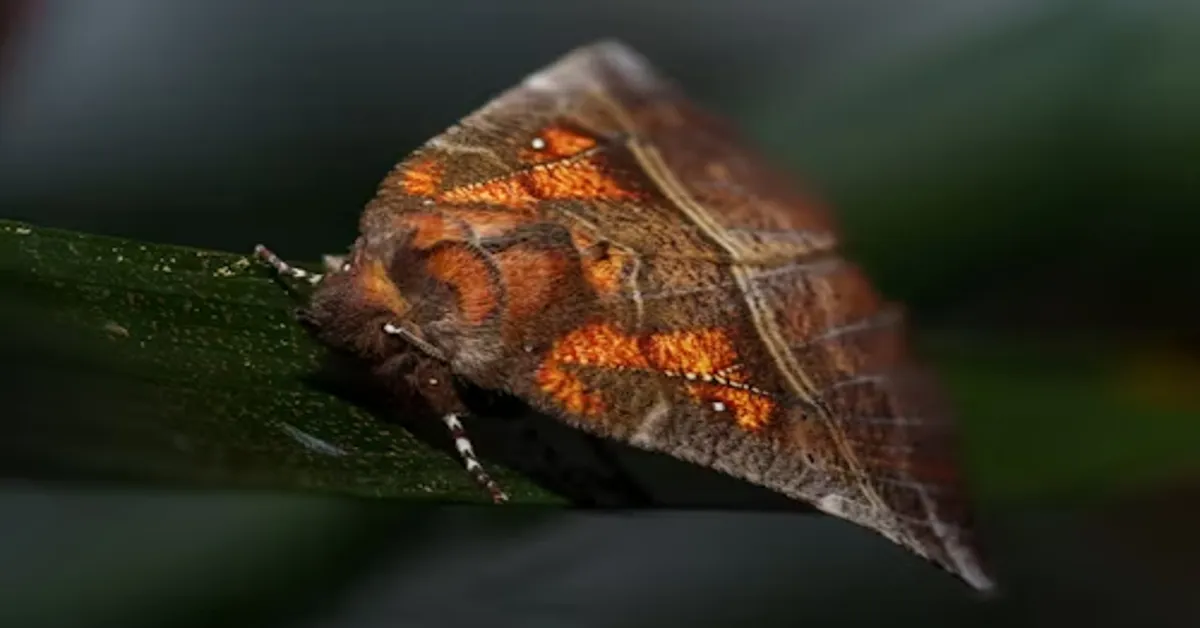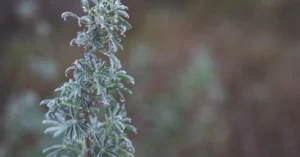The Spanish Moon Moth (Graellsia isabellae), one of the most spectacularly beautiful moth species in the world, stands as a rare gem among the Lepidoptera. Known for its ethereal beauty, this moth is not only admired by entomologists and nature lovers but also holds a unique ecological and evolutionary significance. Native to the mountainous regions of Spain and parts of southern France, the Spanish Moon Moth has long fascinated scientists due to its limited habitat, striking appearance, and specialized life cycle. In this comprehensive article, we’ll dive deep into every aspect of this elusive insect, from its taxonomy and biology to its conservation challenges, evolutionary adaptations, and cultural relevance.
Taxonomy and Classification
The Spanish Moon Moth belongs to the family Saturniidae, a group commonly referred to as “giant silk moths.” This family includes other notable species like the Luna Moth (Actias luna) in North America and the Emperor Moth (Saturnia pavonia) in Europe. The scientific name of the Spanish Moon Moth is Graellsia isabellae, and it was first described in the mid-19th century by Spanish entomologist Mariano de la Paz Graells. Interestingly, the moth was named in honor of Queen Isabella II of Spain, which underscores the early recognition of its beauty and rarity.
Classified under:
- Order: Lepidoptera
- Family: Saturniidae
- Genus: Graellsia
- Species: G. isabellae
It is the only known species in the Graellsia genus, making it a monotypic genus. This further highlights the uniqueness and limited evolutionary lineage of the species.
Physical Characteristics
The Spanish Moon Moth is renowned for its exquisite appearance, which resembles a work of art crafted by nature. Its wingspan ranges between 8 to 10 centimeters for males and can reach up to 12 centimeters in females. The wings are translucent with an emerald green coloration, intersected by delicate, beige-colored vein lines. Each of the four wings has a striking “eye spot,” which is believed to be a defense mechanism to ward off predators.
The forewings are elongated and triangular, while the hindwings feature elegant tails that are characteristic of many Saturniidae. These tails add to its ethereal look and may also serve a functional role in confusing bat echolocation during flight. The body is furry and greenish with white stripes, providing excellent camouflage when resting on pine trees.
The antennae are bipectinate (feather-like) in males, aiding in detecting female pheromones from long distances, while female antennae are less branched. This sexual dimorphism is typical in many moth species.
Life Cycle and Metamorphosis
Like all moths and butterflies, the Spanish Moon Moth undergoes complete metamorphosis, which includes four main stages: egg, larva (caterpillar), pupa (cocoon), and adult.
Egg Stage
Females lay their eggs on the needles of host trees, typically Scots Pine (Pinus sylvestris) or other native conifers. The eggs are small, oval, and grayish in color. Each female can lay between 100 to 150 eggs in a single reproductive cycle.
Larval Stage
The caterpillars hatch after about two to three weeks and immediately begin feeding on pine needles. In their early stages, the larvae are blackish-brown but gradually turn bright green with white lateral stripes and small black tubercles as they mature. The coloration provides camouflage among the pine needles and offers protection from birds and other predators.
The caterpillar passes through five instars (growth stages), growing larger and more colorful with each molt. The larval stage lasts about six to eight weeks, depending on the temperature and availability of food.
Pupal Stage
Once fully grown, the caterpillar descends to the forest floor and constructs a cocoon among the leaf litter or in the soil. The cocoon is brown and robust, offering protection during the vulnerable pupal phase. Pupation lasts through the winter, a process known as diapause, which allows the moth to synchronize its emergence with the onset of spring.
Adult Stage
Emergence occurs between April and June, depending on the altitude and climate. Adults do not feed and rely entirely on the energy reserves accumulated during the larval stage. Their sole purpose is to reproduce. Mating is a short-lived but intense period, often occurring at dusk or night. Males actively seek out females by following their scent trails using their highly sensitive antennae.
After mating, females lay eggs, and the cycle begins anew. Adults live for only about 5 to 10 days, emphasizing the ephemeral nature of this beautiful insect.
Habitat and Geographic Range
The Spanish Moon Moth is primarily found in the mountainous regions of northeastern Spain, especially in the Pyrenees and the Iberian System. Some populations have also been recorded in southeastern France. These moths inhabit pine forests at altitudes ranging from 900 to 1800 meters above sea level.
They are highly dependent on specific host plants, primarily native pine species like Scots Pine and Black Pine (Pinus nigra), which limits their geographic distribution. The moth thrives in cool, moist climates and avoids overly dry or lowland habitats. The fragmentation of pine forests due to human activities has further restricted their range, confining them to isolated pockets of suitable habitat.
Ecological Importance
Though the Spanish Moon Moth may appear delicate, it plays a vital role in its ecosystem. As a caterpillar, it helps in regulating the growth of pine needles, and although adults do not feed, they serve as prey for nocturnal predators like bats and owls. Their pupae also provide nourishment for ground-dwelling mammals and insects.
Moreover, their presence is an indicator of forest health. Because they require very specific environmental conditions to thrive, a healthy population of Spanish Moon Moths often signifies an intact, undisturbed forest ecosystem.
Conservation Status
Despite their beauty and ecological value, the Spanish Moon Moth faces several threats that have led to a decline in its population in certain areas. These include:
- Habitat Loss: Urbanization, logging, and changes in forest management have fragmented or destroyed the pine forests they rely on.
- Climate Change: Rising temperatures and shifting weather patterns have affected their synchrony with seasonal plant cycles, potentially disrupting larval development.
- Pesticide Use: Agricultural runoff and chemical use can be harmful, particularly during the larval stage.
- Illegal Collecting: Due to their rarity and beauty, these moths are sometimes collected illegally, which puts pressure on wild populations.
In Spain, the species is protected by law, and several conservation initiatives are underway to protect its natural habitat and promote captive breeding for potential reintroduction programs.
Evolutionary Adaptations
The Spanish Moon Moth has developed several interesting adaptations to survive in its niche environment:
- Camouflage: Both the caterpillar and adult moth exhibit cryptic coloration that helps them blend with pine needles and bark.
- Pheromone Detection: Males have highly sensitive antennae capable of detecting female pheromones over great distances, a crucial trait given their low population density.
- Tail Structures: The long tails on their hindwings may disrupt echolocation used by predators like bats, giving them a chance to escape.
- Diapause in Pupal Stage: By delaying development through winter, they ensure emergence aligns with food availability and optimal mating conditions.
These traits are a result of millions of years of evolution, fine-tuned to their alpine environment and forest habitat.
Cultural and Scientific Interest
Beyond their ecological role, the Spanish Moon Moth holds a unique place in scientific research and public imagination. Entomologists often study them to understand speciation, adaptation to altitude, and ecological interdependence. Artists and photographers are drawn to their stunning appearance, and they are featured in natural history museums and educational exhibits.
Their image is sometimes used symbolically in conservation campaigns, representing the fragile beauty of nature that needs protection from modern threats. In some local folklore, moths are seen as messengers or symbols of transformation—an idea fitting given their metamorphic life cycle.
Challenges and Future Outlook
Despite conservation efforts, maintaining a stable population of Spanish Moon Moths remains a significant challenge. Conservation strategies must address both immediate threats like habitat destruction and long-term issues such as climate change. Key future actions include:
- Habitat Restoration: Replanting native pine species and managing forests to support biodiversity.
- Climate Mitigation: Monitoring temperature shifts and possibly relocating populations to more suitable habitats.
- Education and Outreach: Raising awareness among local communities about the moth’s ecological importance.
- Scientific Monitoring: Conducting regular surveys to track population dynamics and genetic diversity.
Successful conservation of the Spanish Moon Moth could serve as a model for protecting other specialized insect species with narrow habitat requirements.
ALSO READ: MilestoneAreacom: A Deep Dive into Its Purpose, Potential, and Digital Identity
Frequently Asked Questions (FAQs)
1. What does the Spanish Moon Moth eat?
As larvae, Spanish Moon Moths feed exclusively on pine needles from specific conifer trees like Scots Pine and Black Pine. Adult moths do not eat; they live off the energy reserves they built during their caterpillar stage.
2. Where can I see a Spanish Moon Moth in the wild?
You might encounter this rare moth in high-altitude pine forests in northeastern Spain or parts of southeastern France, particularly during late spring. However, due to their rarity and protective status, observing them in the wild is uncommon.
3. How long does the Spanish Moon Moth live?
The adult Spanish Moon Moth has a very short lifespan of 5 to 10 days. The entire life cycle—from egg to adult—spans nearly a year, with the larval and pupal stages taking the longest.
4. Are Spanish Moon Moths endangered?
While not officially listed as globally endangered, the Spanish Moon Moth is considered vulnerable due to habitat loss, climate change, and illegal collection. It is protected by law in Spain and included in conservation efforts.
5. Can the Spanish Moon Moth be bred in captivity?
Yes, captive breeding programs have been successfully implemented, mainly for conservation and educational purposes. However, they require specific conditions and host plants to mimic their natural environment accurately.









